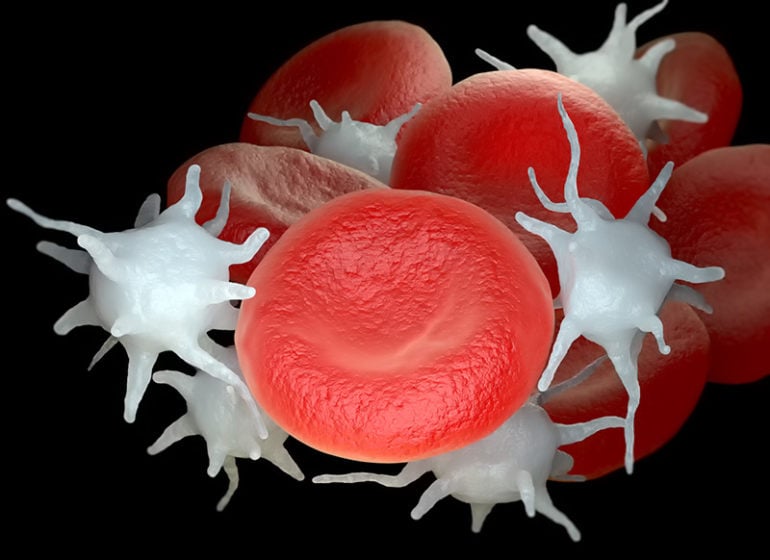Living with essential thrombocythemia (ET) can be a unique journey for individuals diagnosed with this rare blood disorder. ET is characterized by the overproduction of platelets, leading to various health concerns. It can be overwhelming to manage the symptoms and lifestyle changes that come with this condition, but understanding and support can make a significant difference. In this article, we will explore what living with essential thrombocythemia means, the challenges it presents, and the strategies for effectively managing this condition.
The emotional and physical implications of living with essential thrombocythemia can be profound. Patients often experience anxiety about potential complications such as blood clots or bleeding episodes. Regular medical check-ups and a strong support system are crucial for navigating these fears and uncertainties. Through effective communication with healthcare providers, individuals can gain insights into their condition and feel empowered to take charge of their health.
As we delve into the intricacies of living with essential thrombocythemia, we will address common questions and concerns that arise for those affected by this disorder. By shedding light on various aspects of ET, from symptoms to treatment options, we hope to provide valuable information and support for both patients and their loved ones.
Read also:Is A Raspberry Pi Server Secure Exploring Security Measures And Best Practices
What is Essential Thrombocythemia?
Essential thrombocythemia is a myeloproliferative neoplasm (MPN) that leads to an increased production of platelets in the bone marrow. This overproduction can result in various complications, including:
- Increased risk of blood clots
- Bleeding episodes
- Headaches and migraines
- Dizziness and fatigue
This condition is often diagnosed through blood tests that reveal elevated platelet counts along with a thorough assessment of symptoms and medical history.
Who is Affected by Essential Thrombocythemia?
Essential thrombocythemia can affect individuals of all ages, but it is more commonly diagnosed in older adults, particularly those over 60. It affects both men and women, and while the exact cause remains unclear, genetic mutations have been identified in many patients. These mutations can lead to the abnormal functioning of blood cells, prompting excessive platelet production.
What Are the Symptoms of Living with Essential Thrombocythemia?
The symptoms of living with essential thrombocythemia can vary widely among individuals. Some may experience mild symptoms, while others may face significant challenges. Common symptoms include:
- Persistent headaches
- Visual disturbances such as blurred vision
- Skin changes, including redness or burning sensations
- Fatigue and weakness
Many patients also report anxiety and stress related to their condition, as they grapple with the uncertainty of potential complications.
How is Essential Thrombocythemia Diagnosed?
Diagnosing essential thrombocythemia typically involves a combination of blood tests and a review of symptoms. Key tests may include:
Read also:The Purge First Understanding The Concept And Cultural Impact
- Complete blood count (CBC) to assess platelet levels
- Bone marrow biopsy to evaluate the production of blood cells
- Genetic testing to identify mutations associated with ET
Once a diagnosis is confirmed, healthcare providers can develop a personalized treatment plan tailored to the individual’s needs.
What Treatment Options Are Available for Living with Essential Thrombocythemia?
While there is no cure for essential thrombocythemia, several treatment options can help manage symptoms and reduce the risk of complications. Common treatment strategies include:
- Medication to lower platelet counts, such as hydroxyurea
- Low-dose aspirin to reduce the risk of blood clots
- Regular monitoring and check-ups with healthcare providers
In some cases, more advanced treatments such as interferon therapy or plateletpheresis may be recommended based on individual circumstances.
How Can Lifestyle Changes Help in Living with Essential Thrombocythemia?
Implementing lifestyle changes can significantly improve the quality of life for those living with essential thrombocythemia. Consider the following strategies:
- Maintaining a balanced diet rich in fruits, vegetables, and whole grains
- Engaging in regular physical activity to promote overall health
- Managing stress through mindfulness, yoga, or meditation
- Avoiding smoking and limiting alcohol consumption
By making these changes, individuals can help mitigate symptoms and enhance their well-being.
What Support Is Available for Those Living with Essential Thrombocythemia?
Living with essential thrombocythemia can be a daunting experience, but support is available. Patients are encouraged to seek out resources such as:
- Support groups for individuals with ET
- Patient advocacy organizations providing information and resources
- Therapy or counseling to address emotional challenges
Connecting with others who share similar experiences can foster a sense of community and understanding, helping individuals navigate the complexities of their condition.
Conclusion: Living Well with Essential Thrombocythemia
Living with essential thrombocythemia presents unique challenges, but with the right knowledge and support, individuals can lead fulfilling lives. By understanding the condition, seeking appropriate treatment, and making positive lifestyle changes, patients can effectively manage their symptoms and reduce the risk of complications. Embracing a proactive approach to health can empower those living with essential thrombocythemia to thrive despite their diagnosis.


